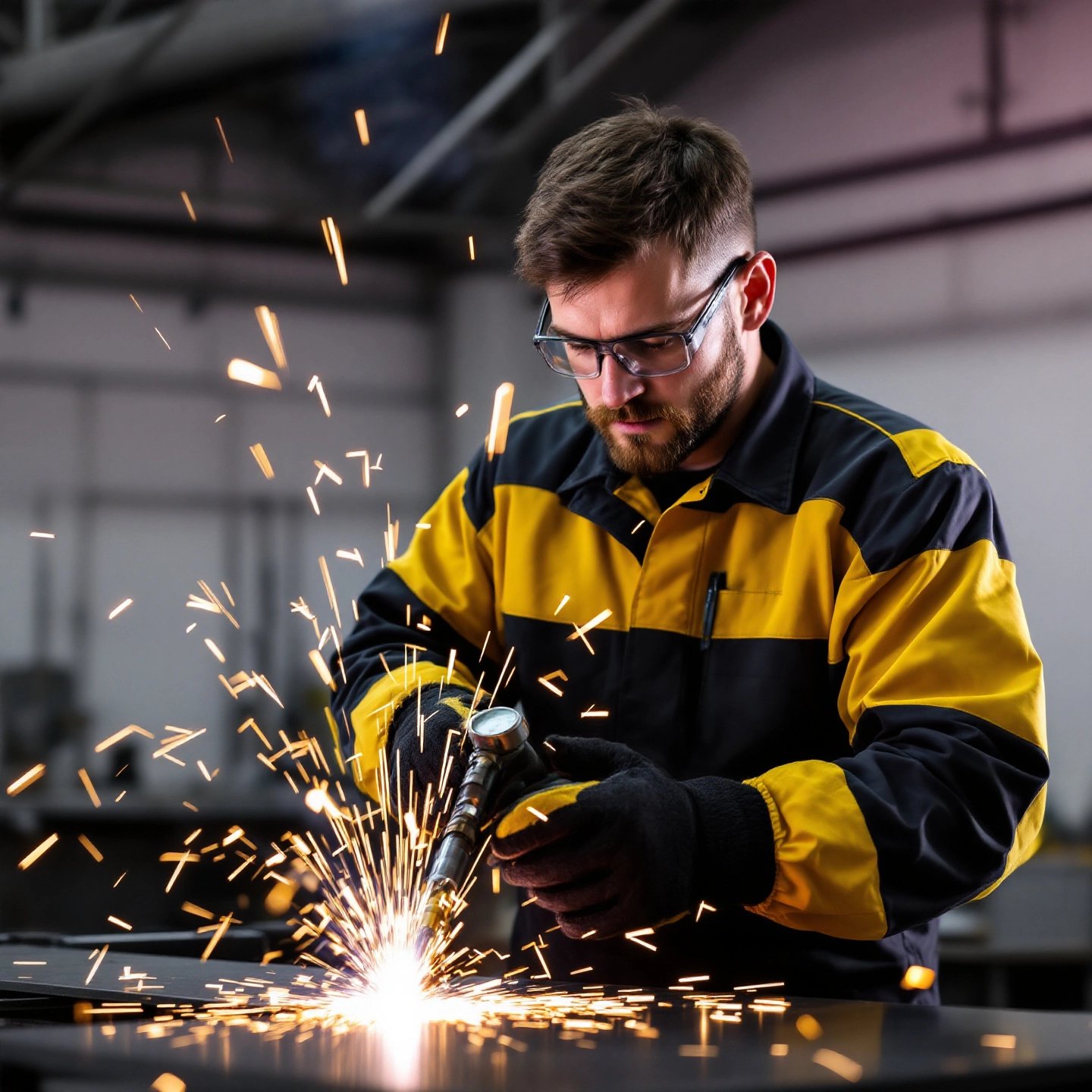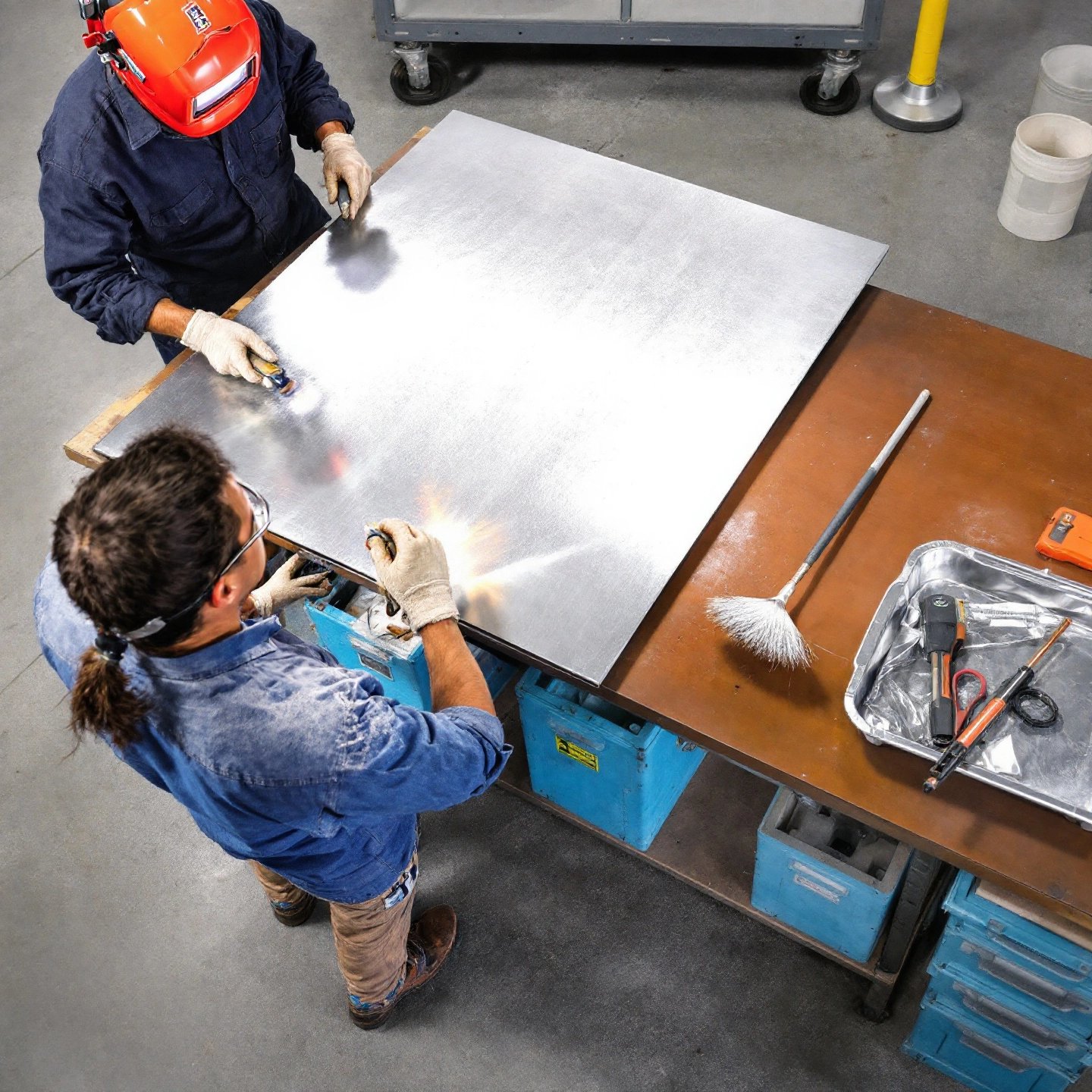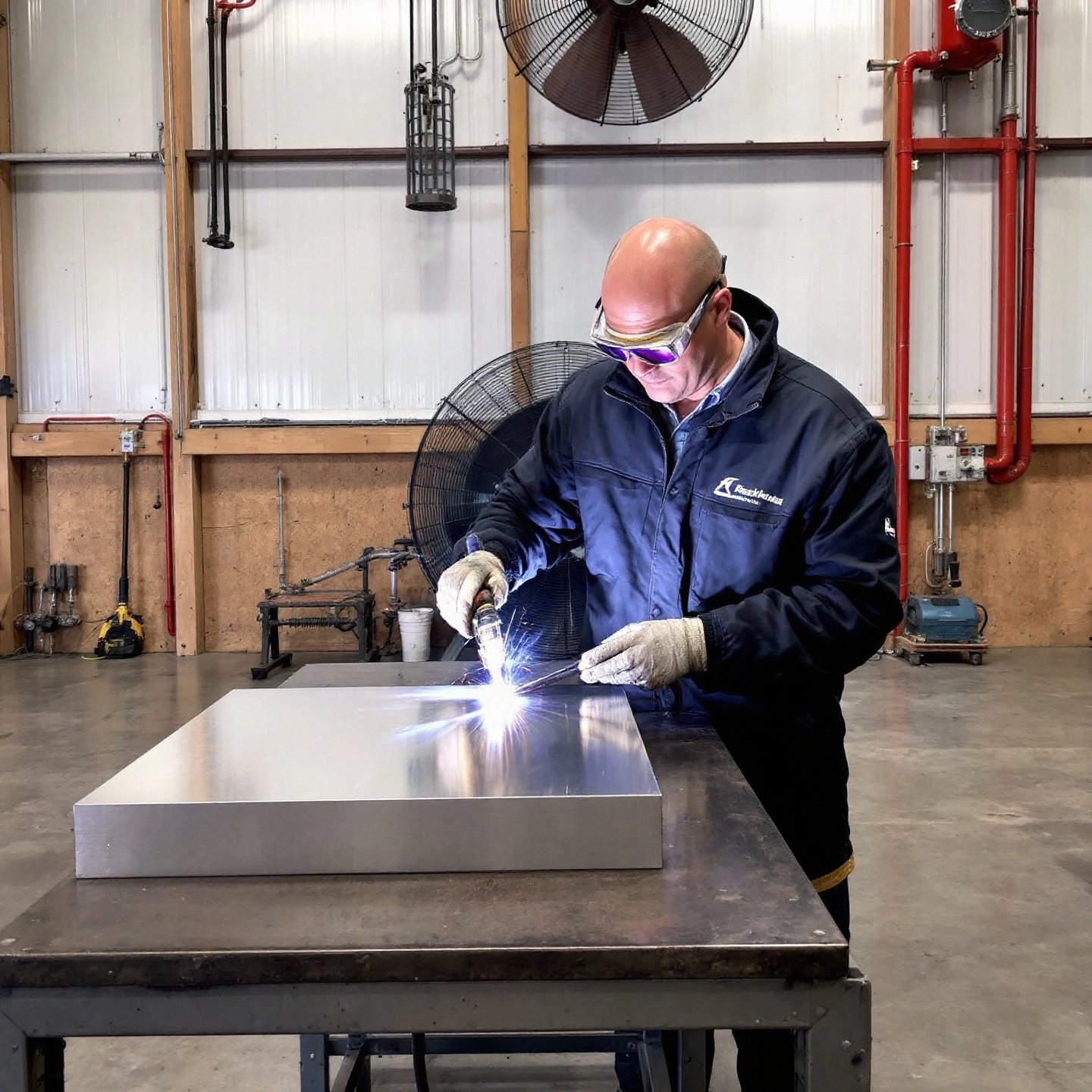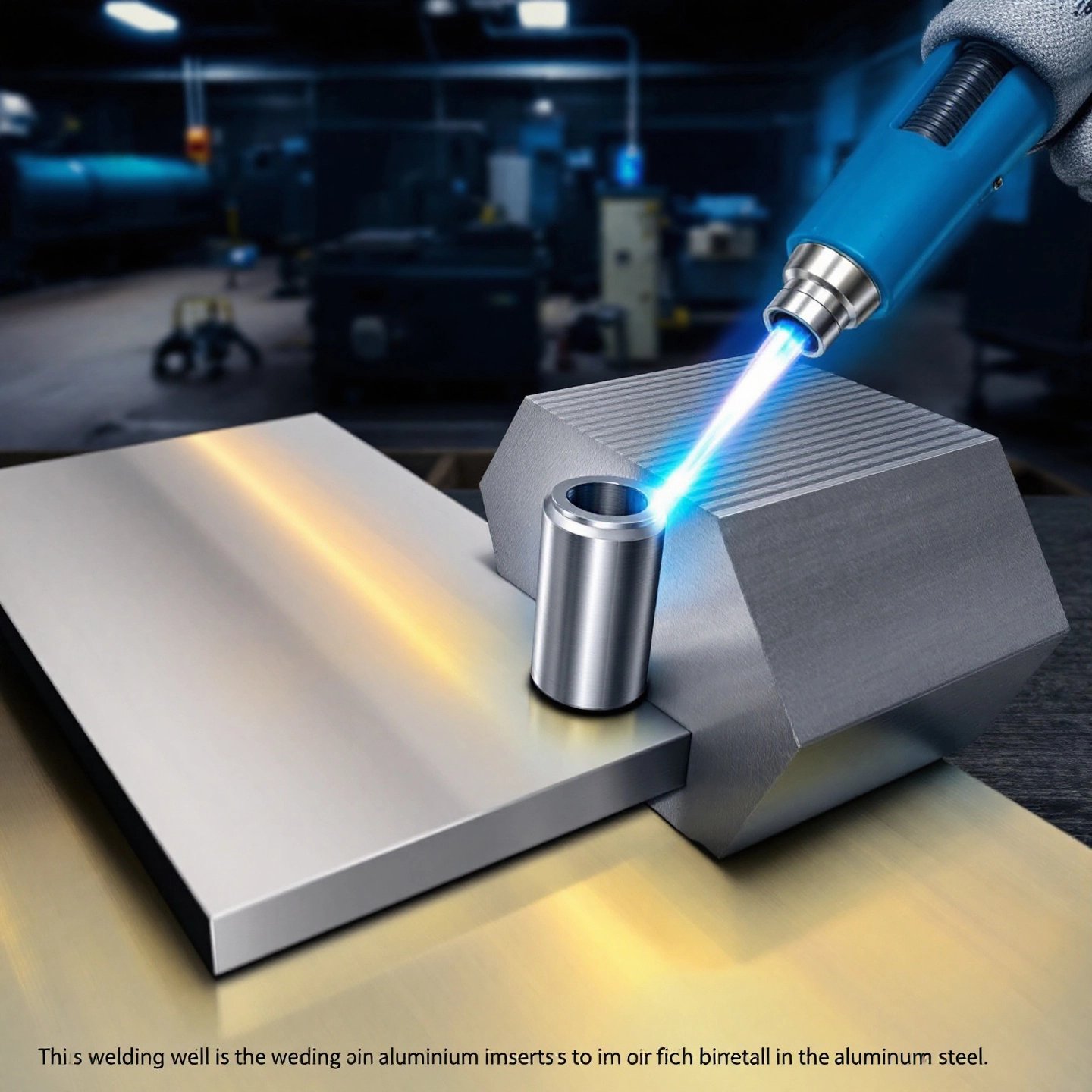
Aluminum welders have become essential tools across various industries, from automotive to aerospace, thanks to their ability to create strong, lightweight joints. The shift towards using aluminum over traditional materials like steel is driven by aluminum's superior properties, such as its lightweight nature, corrosion resistance, and recyclability. This comprehensive blog post aims to equip you with the necessary knowledge, tools, and tips to excel in aluminum welding, focusing on the fundamental processes and safety measures involved.
Understanding how to weld aluminum safely is crucial due to the metal's unique characteristics. Aluminum's high thermal conductivity and the presence of an oxide layer make it challenging to weld, requiring specialized techniques and equipment. This article will delve into the differences between TIG and MIG welding methods, offering insights into their respective advantages and ideal applications. Whether you're a seasoned professional or a novice welder, mastering these methods will enhance your skill set and open up new opportunities.
Throughout this guide, we will explore the basics of aluminum welding, advanced techniques for more complex projects, and provide guidance on selecting the right accessories and services. From choosing the correct aluminum welding rods and wires to understanding the nuances of machine calibration and safety gear, this post is designed to be your go-to resource. By the end, you'll have a clear roadmap to not only improve your welding proficiency but also to make informed decisions about the tools and methods best suited to your needs.

Welding aluminum requires a nuanced understanding of its properties and the challenges they present. One of the most common questions is, "How do you weld aluminum effectively?" The answer lies in grasping the metal's unique characteristics, such as its high thermal conductivity and the presence of a tough oxide layer that complicates the welding process.
Aluminum is known for its excellent thermal conductivity, which is about six times greater than that of steel. This property means that aluminum can quickly dissipate heat, which can be both an advantage and a challenge during welding. While it allows for rapid cooling, it also requires precise control of heat input to avoid burn-through. Additionally, aluminum does not change color when heated, making it difficult to gauge the temperature visually, unlike other metals.
Another critical factor is the aluminum oxide layer, which forms naturally on the surface and has a melting temperature significantly higher than the aluminum itself. This oxide layer must be removed before welding to ensure proper fusion, as it can otherwise lead to incomplete joints and weak welds.
Choosing the right aluminum welding rods and wires is essential for a successful weld. Aluminum welding rods are typically used in TIG welding processes, where the welder manually feeds the rod into the weld pool. These rods are designed to match the base metal's composition, ensuring a strong and durable joint.
For MIG welding, aluminum welding wire is employed. This wire is fed automatically through a spool gun or a push-pull system, allowing for continuous welding. The choice between rods and wires depends on the specific welding process and the project requirements.
Welding aluminum to steel is a complex task due to the differences in their melting points and thermal expansion coefficients. Direct welding of these metals is generally not feasible; however, it can be achieved through specialized techniques, such as using a bimetallic transition insert that accommodates both materials. This method ensures a reliable bond without compromising the integrity of either material.
Understanding these basics sets the foundation for more advanced techniques that will be discussed in the following sections, such as the differences between MIG, TIG, and stick welding methods for aluminum.
When it comes to welding aluminum, choosing the right method is crucial for achieving strong, clean welds. The three most common techniques—MIG, TIG, and stick welding—each have their own advantages and limitations. Understanding these differences can help you select the best approach for your project.
MIG welding aluminum is often favored for its speed and efficiency. This method uses a continuous wire feed as an electrode and requires a shielding gas, typically pure argon, to protect the weld from contamination. The key advantage of MIG welding is its ability to handle thicker materials quickly, making it ideal for large-scale projects. However, it can be challenging to control heat input, which can lead to warping or burn-through if not managed carefully.
One of the specialized tools used in MIG welding aluminum is the aluminum spool gun. This device helps prevent wire feeding issues that can arise due to aluminum's softness. For projects requiring high-quality materials, companies like Shengxin Aluminum offer solutions that ensure optimal performance.
TIG welding aluminum, also known as Gas Tungsten Arc Welding (GTAW), is celebrated for its precision and control. Unlike MIG, TIG welding uses a non-consumable tungsten electrode and requires manual feeding of the filler rod. This process allows for cleaner welds and is ideal for thinner materials or projects requiring intricate welds. However, TIG welding is more time-consuming and requires a higher skill level to master.
The use of alternating current (AC) in TIG welding is essential for breaking down the oxide layer on aluminum, ensuring a clean weld. The ability to adjust the AC balance and frequency provides welders with the flexibility to fine-tune the welding process according to the material's thickness and requirements.
Stick welding, or Shielded Metal Arc Welding (SMAW), is less commonly used for aluminum due to its tendency to produce messy welds and spatter. However, it can be useful in situations where portability is essential, as it does not require a shielding gas. Stick welding is also more forgiving on dirty or rusty surfaces, but it lacks the precision and cleanliness of MIG and TIG methods.
While each welding method has its place, the choice ultimately depends on the specific needs of your project. For large-scale applications requiring high-quality materials, Shengxin Aluminum provides reliable solutions that can enhance the welding process.
Next, we will explore how to choose the right equipment and accessories, focusing on the differences between aluminum TIG welders and wire welders, as well as the importance of safety gear and machine calibration.

When embarking on an aluminum welding project, selecting the right equipment is crucial for achieving optimal results. Whether you're considering an aluminum TIG welder or a wire welder for aluminum, understanding their differences and applications can significantly impact your work quality.
An aluminum TIG welder is renowned for its precision and ability to produce clean welds. This method uses a non-consumable tungsten electrode, which provides excellent control over the welding process. TIG welders are particularly suited for thin materials and projects requiring intricate welds, thanks to their ability to adjust power settings and utilize alternating current (AC) to break down the oxide layer on aluminum effectively. The AC balance and frequency adjustments available on many TIG machines allow for fine-tuning the welding process, making them a preferred choice for detailed work.
On the other hand, a wire welder for aluminum, often used in MIG welding, offers speed and efficiency, especially for thicker materials. This method employs a continuous wire feed as an electrode, with the option to use a spool gun to address the softness of aluminum wire, preventing feeding issues. Wire welders are ideal for large-scale projects where time efficiency is a priority. However, they require careful management of heat input to avoid warping or burn-through, which can be mitigated by proper machine calibration and technique.
While not as common as solid wire, aluminum welding flux core wire can be used in specific scenarios where shielding gas is impractical. This type of wire contains a flux that creates a protective gas shield as it vaporizes during welding. It's particularly useful in outdoor settings where wind might disrupt the shielding gas. However, it requires precise machine settings and is generally less favored for aluminum due to the potential for increased spatter and a less clean weld.
Regardless of the equipment chosen, safety gear and proper machine calibration are paramount. Personal protective equipment such as welding helmets, gloves, and aprons protect against burns, UV radiation, and flying debris. Additionally, ensuring your welding machine is correctly calibrated for aluminum is essential. This involves setting the appropriate amperage, voltage, and travel speed to match the material's thickness and type, ensuring a strong and clean weld.
Choosing the right equipment and accessories sets the foundation for successful aluminum welding. In the following section, we'll delve into preparing aluminum surfaces for welding, focusing on methods to remove the oxide layer and ensure a seamless weld.
Achieving a flawless weld on aluminum begins long before the torch is lit. One of the most critical steps is surface preparation, which ensures the integrity and strength of the weld. Sounds complex? Let’s break it down into simple, actionable steps.
Aluminum naturally forms an oxide layer that can impede welding if not properly removed. This layer melts at a much higher temperature than the aluminum itself, potentially causing weak joints. To tackle this, start by removing any oil, grease, or contaminants using a solvent like acetone or a mild alkaline solution. This initial cleaning step is crucial to prevent weld porosity, as noted by Lincoln Electric.
Next, remove the oxide layer with a stainless steel wire brush dedicated solely to aluminum. This tool helps avoid cross-contamination and is effective in clearing the surface for welding. As emphasized by The Fabricator, using a clean wire brush ensures that oxides are effectively eliminated, promoting better fusion.
For minor repairs or when welding isn't feasible, JB Weld can be a practical alternative. This epoxy adhesive is designed to bond aluminum surfaces, providing a strong and durable fix. While it’s not a substitute for welding in structural applications, it serves well for non-critical repairs where traditional welding might be impractical.
When preparing to weld aluminum to aluminum, beveling and edge preparation are key. Beveling involves creating an angled edge on the workpieces, which increases the surface area for the weld and enhances penetration. This step is particularly important for thicker materials, ensuring a robust and comprehensive weld. Proper edge preparation also involves cleaning the edges thoroughly and ensuring they are dry and free from contaminants.
By following these preparation steps, you'll set the stage for a seamless and strong weld. Next, we'll delve into mastering techniques to avoid common pitfalls, ensuring your welds are not only strong but also aesthetically pleasing.

When it comes to aluminum welding, avoiding common pitfalls such as warping and porosity is crucial for achieving high-quality results. These issues often arise due to improper heat management and shielding gas selection. Let's delve into effective strategies to overcome these challenges.
Aluminum's high thermal conductivity requires precise heat control to prevent warping. One effective method is intermittent welding, which involves welding in short sections with cooling periods in between. This technique minimizes heat buildup, reducing the risk of distortion. Additionally, using clamps and fixtures can hold the metal in place, preventing movement during the welding process.
Adjusting welding parameters like voltage, current, and travel speed is also essential. For instance, lowering the amperage or increasing travel speed can decrease the heat applied to the metal, helping to avoid warping. Pulse welding, which alternates between high and low currents, provides better heat control, especially for thin materials susceptible to warping.
Porosity, or the presence of gas pockets within a weld, can weaken the joint. To minimize this, selecting the appropriate shielding gas is vital. According to ESAB, pure argon is commonly used for both MIG and TIG welding of aluminum due to its ability to produce clean welds with minimal porosity. However, argon-helium mixtures can be beneficial for thicker materials, as they provide greater heat input, reducing gas entrapment and lowering porosity levels.
Maintaining a consistent travel speed is equally important to ensure uniform heat distribution and prevent porosity. A steady hand and careful monitoring of the weld pool can make a significant difference in the final weld quality.
For large-scale projects requiring precise joint fit, using high-quality materials is essential. Shengxin Aluminum offers specialized extrusions that can enhance the welding process by ensuring better joint alignment and fit. Utilizing such materials helps achieve a seamless weld, reducing the likelihood of common welding defects.
By mastering these techniques, you can significantly improve the quality of your aluminum welds, avoiding common pitfalls and ensuring strong, aesthetically pleasing results. The next section will explore advanced methods for tackling complex welding projects, pushing your skills even further.
As the demand for aluminum welding grows across various industries, advanced welding techniques have become essential for tackling complex projects efficiently. These methods not only enhance productivity but also ensure high-quality welds, even in challenging scenarios. Let's dive into some of the cutting-edge techniques that are reshaping the landscape of aluminum welding.
Pulse MIG welding is a standout technique that offers significant advantages over traditional methods, particularly in high-volume manufacturing. This process involves alternating between high peak currents and low background currents, allowing for better control over heat input and reducing the risk of defects such as burn-through and warping. According to Miller Welds, pulse MIG welding is ideal for both thick and thin sections of aluminum, as it minimizes downtime by reducing the need for repositioning parts. The cooler weld puddle produced by this method is suitable for all positions, enhancing versatility and efficiency.
Moreover, pulse MIG welding improves the weld's appearance and quality by providing excellent directional control over the weld puddle. This makes it easier for operators to produce clean, aesthetically pleasing welds, even when bridging gaps in the weld joint. The ability to adjust the arc cone width further allows welders to tailor the bead profile to specific applications, ensuring optimal results.
In large-scale operations, robotic welding systems offer unparalleled consistency and speed. These automated systems are equipped with advanced controls that can handle complex welding tasks with precision. By integrating robotic welding into aluminum fabrication, manufacturers can achieve higher throughput and reduce human error, leading to more consistent and reliable welds.
Robotic welding is particularly beneficial in environments where repetitive tasks are common, as it ensures uniformity across all welds. This method also allows for remote operation, which can be advantageous in hazardous or hard-to-reach areas. As a result, robotic welding not only boosts productivity but also enhances safety by reducing the need for manual intervention in potentially dangerous settings.
For projects requiring intricate welds, advanced aluminum TIG welder setups with enhanced controls are invaluable. These setups allow for precise adjustments to the welding parameters, such as amperage, AC balance, and frequency, enabling welders to fine-tune the process according to the material's specific needs. This level of control is crucial for achieving high-quality welds on thin materials or complex joints.
Modern TIG welders often come equipped with features like pulse control and pre-programmed settings, which simplify the welding process and reduce the learning curve for operators. By utilizing these advanced controls, welders can minimize downtime and improve overall efficiency, making them well-suited for projects that demand both precision and speed.
As aluminum welding continues to evolve, embracing these advanced techniques can significantly enhance your capabilities, allowing you to tackle complex projects with confidence and efficiency. In the next section, we'll explore how to safely combine aluminum with other metals, ensuring strong and reliable bonds across different materials.

Welding aluminum to steel is a challenging task that requires careful consideration of both materials' properties. The key question often asked is, can you weld aluminum to steel directly? The short answer is no, not without employing specialized techniques. Let's explore how to safely bond these dissimilar metals using proven methods.
Welding aluminum directly to steel is problematic due to their vastly different melting points and thermal expansion coefficients. When these metals are arc welded directly, brittle intermetallic compounds form, leading to weak joints prone to failure. To circumvent this issue, welders must utilize transitional elements that accommodate both materials.
One of the most reliable methods for welding aluminum to steel is through the use of bimetallic transition inserts. These inserts consist of a section of aluminum bonded to a section of steel, creating a seamless transition between the two metals. According to Red-D-Arc, this approach provides a strong, durable bond comparable to welding similar metals together. The process typically involves welding the aluminum side of the insert to the aluminum component first, by welding the steel side to the steel component. This sequence helps manage heat distribution and prevents overheating the insert.
Another method, albeit less commonly used for structural applications, is dip coating, also known as hot dip aluminizing. This process involves coating the steel component with aluminum, allowing the weld to occur between aluminum surfaces. While this method can be effective in preventing intermetallic compound formation, it is not recommended for applications requiring full mechanical strength, as noted by the Nickel Institute. Instead, it's typically used for seam sealing rather than structural bonding.
In dissimilar metal welding, selecting the appropriate filler metal is crucial. The filler must be compatible with both base metals to ensure a robust joint. For aluminum-to-steel applications, using a filler metal with properties that bridge the characteristics of both metals can enhance the weld's integrity. While specific filler metals may vary based on the exact materials and application, consulting with welding specialists or material suppliers can provide guidance tailored to your project's needs.
By understanding these methods and their applications, you can effectively tackle the challenge of welding aluminum to steel, ensuring strong and reliable bonds. In the next section, we'll provide tips for finding reliable local welding services, helping you choose the right partners for your aluminum welding projects.
When you're in need of expert aluminum welding services, finding a reliable provider is crucial to ensuring the quality and durability of your project. But how do you go about choosing the right service? Here are some key steps to help you find the best aluminum welder near me.
Start by verifying the certifications of potential welding services. The American Welding Society (AWS) provides a QuikCheck tool to confirm a welder's credentials, ensuring they meet industry standards. Additionally, inquire about the equipment used. Reliable services should utilize modern, well-maintained machines capable of handling aluminum's specific requirements, such as TIG and MIG welders with advanced controls for precise work.
Cost is always a consideration, but it's important to balance affordability with quality. Request detailed estimates from multiple providers to compare prices. Keep in mind that extremely low prices might indicate a compromise in quality or experience. Transparent pricing, with a breakdown of costs for materials, labor, and any additional services, is a good indicator of a trustworthy service.
Customer reviews can provide valuable insights into a service's reliability and quality. Platforms like Thumbtack offer reviews and ratings for local aluminum welding services. Look for consistent positive feedback regarding workmanship, punctuality, and customer service. Pay attention to how the service handles any negative reviews, as this can reflect their commitment to customer satisfaction.
Finally, consider the service's proximity and availability. A nearby service can reduce transportation costs and time, making it more convenient for ongoing projects. Additionally, ensure they offer the specific aluminum welding techniques you require, whether it's MIG, TIG, or specialized methods for complex tasks.
By following these tips, you'll be well-equipped to find a reliable aluminum welding service that meets your needs and ensures the success of your project. In our concluding section, we'll recap the importance of mastering aluminum welding techniques and encourage continuous learning to achieve optimal results.
Mastering the art of aluminum welding is an invaluable skill that opens doors to numerous opportunities across various industries. From selecting the right aluminum welder setup to implementing advanced aluminum welding techniques, every step is crucial in achieving high-quality welds. This journey requires not only the right equipment but also a deep understanding of the processes involved and the commitment to continuous learning and experimentation.
Throughout this guide, we've explored the fundamental and advanced techniques necessary for successful aluminum welding. We've delved into the nuances of MIG and TIG welding, the importance of choosing the right filler materials, and the critical role of proper surface preparation. Each element contributes to the overall quality and durability of the welds, ensuring they meet industry standards and withstand the test of time.
One of the key takeaways is the significance of using high-quality materials. Shengxin Aluminum, with its extensive range of premium aluminum profiles, offers the precision and reliability needed for optimal welding outcomes. Their advanced production capabilities ensure that you have access to materials that not only enhance your project but also provide the structural integrity required for demanding applications.
As you continue to hone your skills, remember that the welding landscape is ever-evolving. New technologies and methods are constantly emerging, providing opportunities to improve efficiency and quality. Stay informed, seek out additional training, and don't hesitate to experiment with new techniques to push the boundaries of what's possible in aluminum welding.
Ultimately, the journey to mastering aluminum welding is one of dedication and passion. By embracing the techniques and insights shared in this guide, you are well on your way to producing exceptional welds that stand out in any project. For those looking to further enhance their capabilities, consider exploring Shengxin Aluminum's offerings to ensure your materials match the excellence of your welding skills.
TIG welders are often preferred for aluminum due to their precision and control, especially for thinner materials. MIG welders can also be effective, particularly for thicker sections, offering speed and efficiency.
Yes, welding aluminum often requires a welder with capabilities for AC TIG or a MIG welder with a spool gun. These tools help manage aluminum's unique properties like high thermal conductivity and oxide layer.
While possible, welding aluminum with a 110V MIG welder limits material thickness and may require preheating. A 220V setup is generally recommended for better results.
A high-quality TIG welder is typically the best choice for aluminum due to its ability to produce clean, precise welds. Features like AC balance and pulse control enhance performance.
Direct welding of aluminum to steel is not feasible due to differences in properties. However, using bimetallic transition inserts can effectively bond these metals.
 خدمة الإنترنت
خدمة الإنترنت 0086 136 3563 2360
0086 136 3563 2360 sales@sxalu.com
sales@sxalu.com +86 136 3563 2360
+86 136 3563 2360